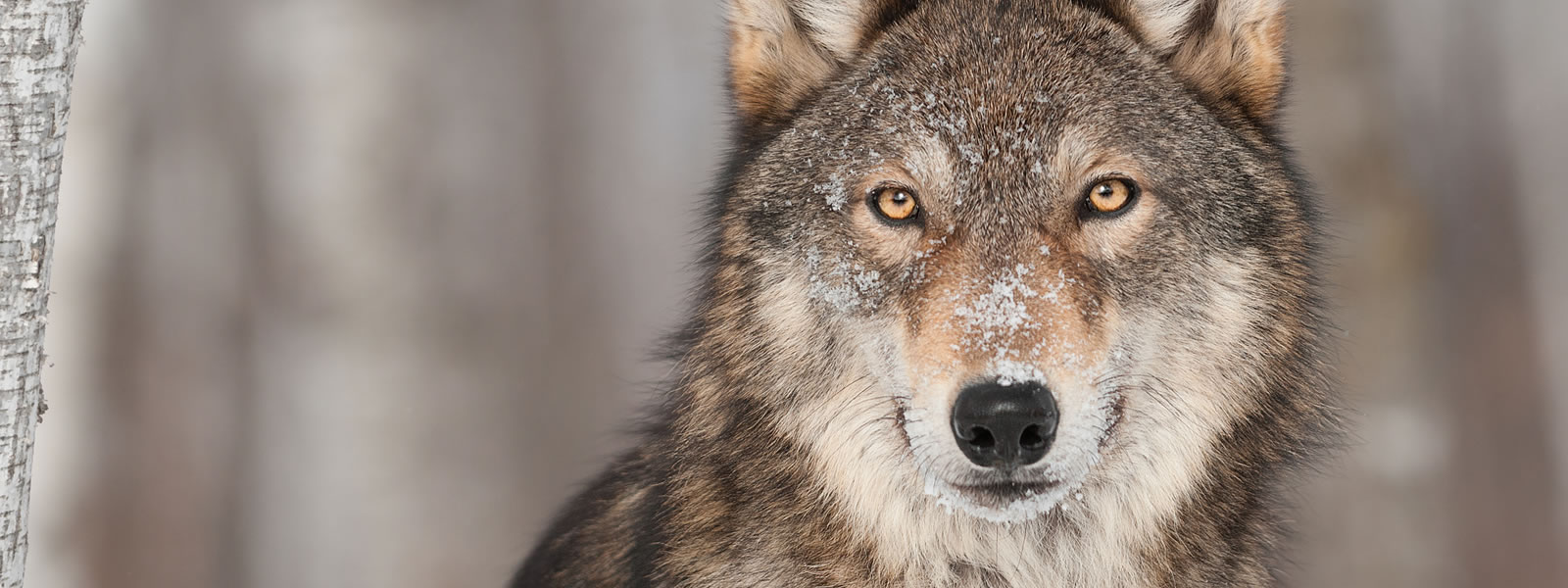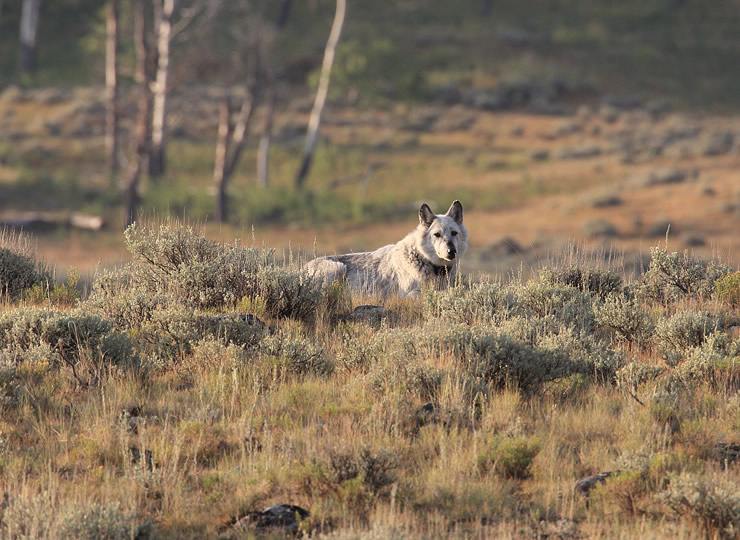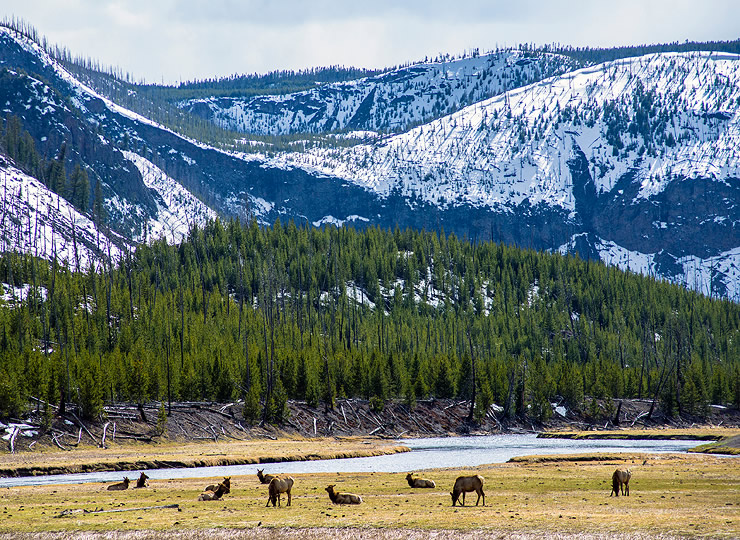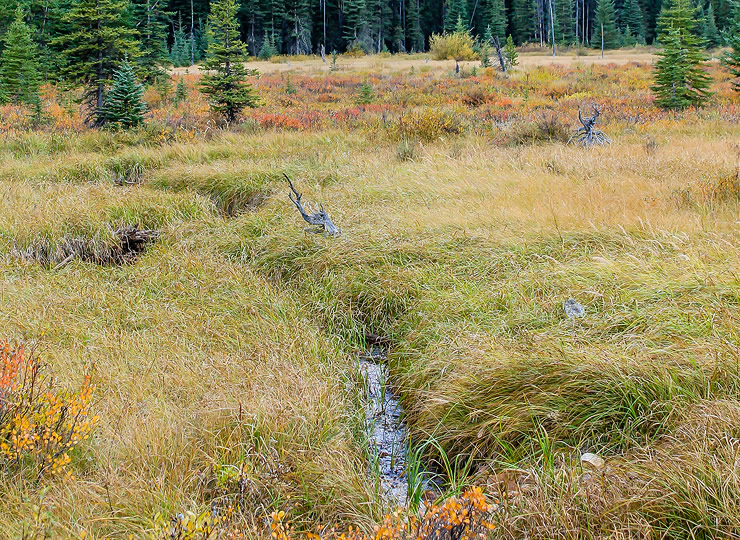Gray Wolf
Canis lupus

Gray wolves are a top predator in Yellowstone National Park. They play a crucial role in keeping the park’s ecosystem healthy by controlling its elk population.
Range map of the gray wolf

The gray wolf disappeared from Yellowstone National Park, and many other parts of its range, in the mid-1900s. Photo credit: iStock/Getty Images Plus
Gray wolves used to roam across wide portions of North America, all the way from Alaska to Mexico. As humans developed these areas, wolves and many other top predators were killed or pushed out. They were even eliminated from some protected areas, such as Yellowstone National Park.
Gray wolf (Canis lupus)
After wolves disappeared from Yellowstone, the size of the park’s elk population exploded. The elk ate many plants, especially young seedlings and willows, growing along the rivers. Normally, the roots of these plants help hold the soil in place. So the dramatic decrease in these plants led to erosion along the riverbanks, which destroyed habitats for animals like beavers and songbirds.
In 1995, the federal government of the United States began a program to reintroduce wolves to Yellowstone. In the decades after wolves returned to the park, the elk population declined, the willow population recovered, and the health of the park’s ecosystem stabilized.

Elk grazing near a river. In the absence of wolves, the elk often ate too many plants. Photo credit: iStock/Getty Images Plus

A river habitat with many plants. Habits like these recovered after wolves returned and began controlling the elk population. Photo credit: iStock/Getty Images Plus
In 1995, the federal government began a program to reintroduce wolves to Yellowstone. In the decades since, the elk population declined, willows rebounded, and the health of the whole ecosystem stabilized.